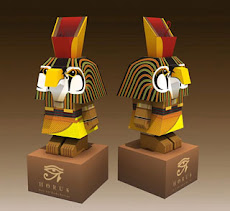- Quality techniques
- 7 Basic Quality techniques
1. Histograms
2. Pareto Charts
3. Run Charts
4. Scatter Diagrams
5. Control Charts
6. Flow Charts
7. Cause and Effect Diagrams
In the following we will Examine the Techniques and Tools that Support Quality Management within a company. There are for the 7 Basic Tools which we are going to define. Generally they can be subdivided into:
Mathematical statistical Tools
1. Histograms :
What is it?
• A Histogram is a bar graph
• Usually used to present frequency data
How does it Work?
•Define Categories for Data
•Collect Data, sort them into the categories
•Count the Data for each category
•Draw the Diagram. each category finds its place on the x-Axis.
•The bars will be as high as the value for the category
What is its use?
•Histograms provide an easy way to evaluate the distribution of Data over different categories
2. Pareto Charts :
What is it?
•A Pareto Chart is a Histogram
•+ a cumulative line
How does it Work?
•Similar like a Histogram
•First define categories, collect Data and sort them into the Categories. Count the occurrences for each category.
•Now rank the categories starting with highest value.
•Draw cumulative points above all the bars and connect them into a line.
What is its use?
•Pareto Charts are used to apply the 80/20 rule of Joseph Juran which states that 80% of the problems are the result of 20% of the problems. A Pareto Chart can be used to identify that 20% route causes of problem.
3. Run Charts :
What is it?
•Run Charts are representing change
•In measurement over a sequence or time
How does it Work?
•Gather Data
•Organize Data
»Measurements (y) must be confronted with time or sequence of the events.
•Chart Data
•Interpreting Data
What is its use?
•Determining Cyclic Events and there average character
4. Scatter Diagrams :
What is it?
•Statistical tool showing a trend in a series of values.
How does it Work?
•Gain values series
•Draw graph with value points
•Draw trend line: m*x+a
»Calculate m value
»Calculate a value
»Calculate points for trend line.
What is its use?
•Demonstrating correlations between values and showing trends for value changes.
5. Control Charts :
What is it?
•Statistical tool, showing whether
•A process is in control or not
How does it Work?
•Define Upper limit, lower limit and medium value
•Draw Chart.
•Gather values and draw them into chart
What is its use?
•Taking samples of a process and detect possibility of process being out of control
6. Flow Charts :
What is it?
•Way of representing a Procedure
•using simple symbols and arrows
•A Flowcharts shows the activities in a process and the relationships between them. Operations and Decisions can be represented
How does it Work?
•Determine what Process or Procedure you want to represent.
•Start at a certain point and go then step by step using circles or rectangles for operations or other elements, diamonds for decisions, arrows show the flow and the direction.
•Document the elements with titles. Let it close with an ending point.
What is its use?
•A Flow chart lets a process or procedure be understood easily it also demonstrate the relationships between the elements.
7. Cause and Effect Diagrams :
What is it?
•It’s a diagram that demonstrates
•the relationship between Effects
•and the categories of their causes
•The Arrangement of the Diagram lets it look like a fishbone it is therefor also called fish-bone diagram
How does it Work?
•Determine the Effect or Problem you would like to examine
•Categorize the possible causes
•find subcategories
•Describe the possible causes
What is its use?





